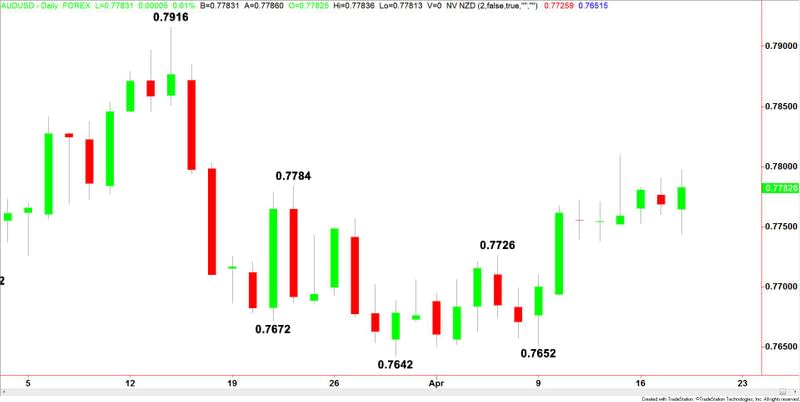AUD/USD and NZD/USD Fundamental Daily Forecast -Australian Employment Growth is Slowing
The Australian Dollar is trading lower early Wednesday after three days of consolidation following the release of weaker than expected employment data.
At 2034 GMT, the AUD/USD is trading .7769, down 0.0013 or -0.17%.
The AUD/USD started the session steady to higher but prices quickly turned south after the Australian Bureau of Statistics (ABS) reported that employment rose by only 4,900 in seasonally adjusted terms, missing expectations for an increase of 20,000.
The size of the increase showed the pace of employment growth is slowing.
On top of the underwhelming March employment result, February’s figure, originally reported as a gain of 17,750, was revised down to show a decline of 6,300. However, employment growth in January was revised up to show an increase of 37,400, well above the 12,500 increase originally reported.
The details of the report showed full-time employment fell by 19,900 to 8.51 million, masked by an increase in part-time employment which rose by 24,800 to 3.9 million.
Total hours worked increased 4.5 million hours to 1.74 million hours.
On the friendly side of the equation, total employment, at 12.48 million, sits at the highest level on record. Additionally, the unemployment rate held at 5.5%, as expected, as labor force participation dipped from 65.6% to 65.5%. Also, February’s unemployment rate of 5.6% was revised down by 0.1 percentage points.

Forecast
The key to understanding the Australian jobs report is to look at the bigger picture. Over the year, full-time employment increased by 226,900, outpacing a 140,200 lift in part-time workers. Combined, total employment rose by a still-brisk 367,100. However, annual employment growth has now fallen from the high of 431,000 set in January this year.
Furthermore, monthly growth in the ABS’ trend employment reading fell to 14,000 in March. Less than a year ago, monthly growth stood at nearly 42,000.
Earlier in the week, the Reserve Bank of Australia meeting minutes indicated the central bank thought the labor market was a bright spot in the economy. If the pace of new hires continues to fall then this would further support the RBA’s plan to keep interest rates at historically low levels. This would put a bearish spin on the Australian Dollar.
This article was originally posted on FX Empire

 Yahoo Finance
Yahoo Finance 